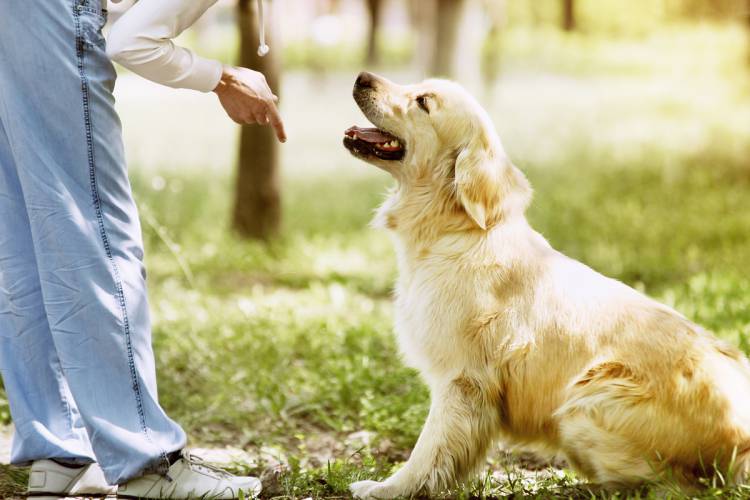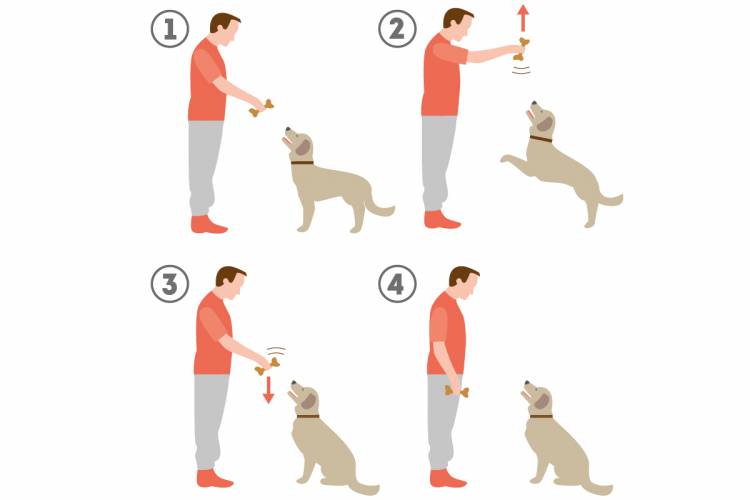Trained dog, happy owner
Having a dog doesn’t just mean playing, walking, feeding it and giving it somewhere to sleep. Living with a pet means teaching it to behave. If your dog is trained, you will trust it more and therefore give it more freedom.
pets
Share

It is important that the training process begins as early as possible. Also, it’s a stage which encourages you to get to know each other better. Dogs have different ways of being and it is interesting to know your pet well to know what its virtues and faults are. Its size, breed and personality will decisively influence the process.
Training enables you to have more control over your dog in difficult situations and to therefore enjoy its company a lot more. The consequence of good training is that the dog listens to you, and the natural effect is that you trust it more and give it more freedom. Patience and affection are keys to starting to train your pet, but if you can’t dedicate enough time to its training or you don’t feel capable of doing it, the best thing is to resort to professional services such as www.entreperretesadiestramiento.com. Experts recommend some basic rules to start with training.
Image with examples of how to teach him to sit or to not pee in the house. For example, in the case of sitting, have a dog treat in your hand. Move your hand up so that the dog does the opposite movement following the treat and moves down until he sits.
ASSUME A ‘TEACHER’S’ ROLE
• Commands must be clear and concise, as for praise. If you always repeat the same words or hand signals, it will be easier for the dog to learn them. For example, ‘sit’, ‘come’ or ‘no’ for commands and ‘good’ or ‘good boy’ when you want to praise him.
• Encourage him by emphasising his progress and use a positive, affectionate voice so it is clear that he did what you wanted. If he perceives fear, frustration or anger in your words, he will get confused.
• Stroke him and show you’re happy when he does things right and try not to scold him if he does something wrong, especially at the beginning.
• Teach him to understand your commands in different situations and to obey, whether he sees you or not.
STAY CALM
• Dogs, especially puppies, have limited attention and are easily distracted. You will have to be patient.
• Ideally you should do 2 to 3 short training sessions (about 10 minutes) every day. Take breaks to achieve his total concentration.
• You will probably need several weeks’ constant training for him to start to understand.

CHOOSE THE 'CLASSROOM' WELL
The training area must be an area in which the dog is comfortable and free from distractions. Using a room in the house is a good option to separate him from distractions and to catch his attention more easily.
Although to start with it may seem more appropriate, outdoor sessions offer a much less controlled environment and many more distractions. If you have to train him outside, it is a good idea to find a secure area to avoid him running away, or to use a lead to be able to control him more easily.
REWARD WITH TREATS AND AFFECTION
All effort has its reward and for your pet friend there is no better reward than treats. Keep a bagful of several types of dog treats to hand and find out which he prefers while you train. If you gave him a toy when he obeys the command, he would want to bury it or chew it and would lose concentration.
At the start, you will need to use one or several treats every time he completes a ‘task’ but with time you will have to reduce treat rewards and keep giving affectionate rewards.
Make sure he can see and smell the treat before you give the command so he is motivated to obey your commands.






